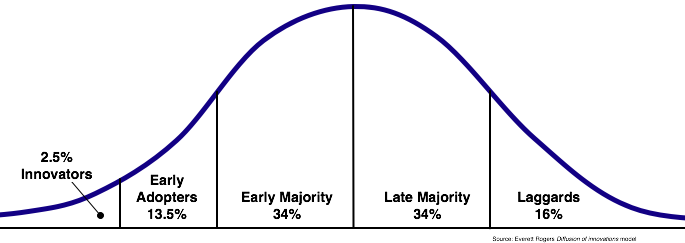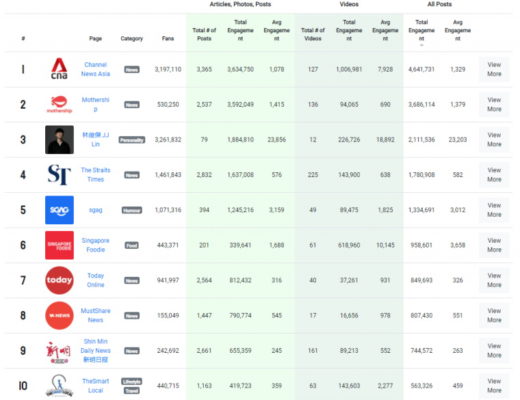From Facebook listicles to Facebook videos
It’s 2017. If you’re still trying to write listicles as your core content marketing strategy, it’s time to stop.
When disruptions evolve into the new standard, companies that adapt quick gain massively – like Donald Trump in a presidential election with no worthy contenders. A correct prediction made early can change the fortune of a company. It gives early adopters a lead so insurmountable the rest of the world is forever playing catch-up – until the next big game changer. In the case of social media, it was Facebook getting that unbeatable edge which even Google+ failed to overcome. And in the case of social marketing in 2016, it was publishers who moved to Facebook videos that ended up dominating your news feeds and gaining fans rapidly, obscuring those still stuck in listicle mode.
Predicting this shift before other publishers meant we had to train a team specifically to create Facebook videos before there was even the demand for them. Clients had no idea what Facebook videos were, but when they saw the results, they caught on quick. This video for a WI-FI router client reached over 1 million people organically. Imagine getting 1 million people to see your product! How much would you value that?
Setting up a Facebook team before there was the demand was a calculated risk, which thankfully worked out. And when we applied this video strategy to one of our new sites, Eatbook.sg, we gained 50,000 followers organically in 4 months. This amount of fans took similar publishers years to achieve – and that is the power of early adoption.

Publishers who moved into video during the second half of 2016 are the ‘Late Majority’. Those who’ll get in during 2017 are considered laggards, but they’ll keep up. Those who refuse to adapt will lose organic visibility and they’ll start to complain that Facebook organic reach is dead. They are the ancient big buttoned Nokias defiantly trying to survive in a world that has gone touch screen. Here’s why Facebook videos should be picked if you ever had to choose between an article and video.
1. Facebook doesn’t want to lose advertising revenue to Google’s YouTube.
Every YouTube link is given a terrible edgerank score by Facebook. A low edgerank score simply means people won’t see your content in their news feeds. Facebook doesn’t want people leaving Facebook when they can watch the same video on their platform because they’ll lose advertising revenue to their competitor, Google. That’s why they are so lenient on removing copyrighted content. And any YouTube link is ‘penalised’. Some companies have resorted to creating articles just to embed YouTube videos to circumvent this e.g Upworthy. But FB eventually wised up and adjusted their algorithm and that was the end of that.
2. Video assets have significantly higher edgeranks score than articles.
Take YouTube out of the equation and you’ll have articles, photos, status updates and gifs. We’ve experimented early and found our videos get on average 200%-300% more reach than our articles. They could be the same exact content, but it was the format that made all the difference. That’s when we knew we had to re-allocate our manpower.
Here’s a video that was re-purposed from an article, getting insane engagement not achievable in article form.
Brands like Channel News Asia were quick to realise videos outperformed articles. CNA created a new video page called CNA Insider which became a great ancillary asset for them. Kudos to them because most local media still lag far behind. Some big publications even force their journalists to double up as ‘handphone videographers’.
3. Content is getting richer as data infrastructure improves
There was a time where people were happy with just text because it meant not having to wait 5 minutes for your 28.8kbit modem to load all the pictures in your articles. Now, articles that instantly load pictures like “Facebook instant stories” have become the norm. Likewise, data infrastructure has caught up to the point of not having to painfully wait for videos to buffer before you can view them. This trend will only continue and we’ll probably see some sort of full HD 360 VR live streaming within years.
4. People want to see richer content
Not many want to spend 5 minutes reading an article when they can get the same information in 5 seconds by looking at a picture. You don’t decide what to eat by reading and imagining, you just look at Instagram. You eat with your eyes first. You don’t decide where to travel by reading travel guide books, you search for pictures of epic looking experiences. Or listicles with such pictures, hence their popularity. Videos are an upgrade of the viewing experience, giving audiences richer content in a shorter period of time. People like to passively consume content with as little effort as possible. With videos, you don’t have to try and visualise the experience from someone’s words, you just have to open your eyes.
5. FB is continually developing more assets to support video
Facebook introduced cross-posting for videos quietly in 2016, allowing page owners to re-share any permitted video asset across pages, without having to re-upload the video. This meant the existing video and Edgerank score it had, went along with the asset even when another page shared it. And you can write your own copy and boost it on your own terms. Before that, they enabled 360 video functionality as well as live streaming. I’m not sure what new features are in store in 2017 but I’m sure there will be more of them to support video content.
The future of social marketing
Social marketing in 2017 will be dominated by Facebook videos. Unlike Instagram, YouTube or Snapchat which are pretty much ‘closed networks’, Facebook allows videos to reach audiences beyond pages that people follow, allowing strong content to go viral organically. This makes Facebook the most powerful medium for viral content. This is why even though listicles perform 200%-300% poorer than videos, they are still a decent option when compared to say, Instagram marketing which is a ‘closed network’ with unclickable links. Because of the ‘viral’ factor alone.
If you struggle to get your brand’s content seen organically, it’s not because of Facebook. It’s because other publishers have adapted quicker to content that performs better, and the side-effect of that is having lower Edgerank scored content getting drowned out. But Facebook is getting more and more saturated with videos to the extent that soon, Facebook videos may not be enough.
2017 is the year to adapt or risk becoming irrelevant.


Comments